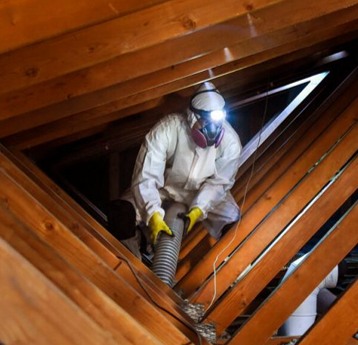It is a type of reflective insulation; a high-performance product that can help to extend the life of your air conditioner.
Radiant barriers are available in different qualities too; thus, considerable attention should be given to the quality while choosing the material.
Heat travels from a warm area to a cool area by a combination of conduction, convection, and radiation. Heat transfers by conduction from a hotter location within a material to a colder location, while it transfers by convection in liquids and gases (hot air rise upwards). Radiant heat travels following a straight line path, away from any surface and heats anything and everything on its path.
Most common insulation materials work by slowing conductive heat flow and convective heat flow; while, radiant barriers and reflective insulation systems work by reducing radiant heat gain. Radiant barriers are most effective in hot climates than in cool climates, especially when cooling air ducts are located in the attic but dust and other accumulation on the reflective surface of the radiant barrier reduce its reflective capability and make them less efficient.
Radiant barriers consist of a highly reflective material, usually aluminum foil, which is applied to one or both sides of a number of substrate materials such as craft paper, plastic films, cardboard, oriented strand board, and air infiltration barrier material. Some products are fiber-reinforced to increase durability and ease of handling. Double-faced radiant barriers are also available.
Radiant barriers can be combined with many types of insulation materials in reflective insulation systems. In these combinations, radiant barriers can act as the thermal insulation’s facing material.
Radiant barriers are installed in the attic by stapling the material to the underside of the roof deck, normally on the rafters. Good quality radiant barriers are also very sustainable, hence, economic in the long run.
A radiant barrier’s effectiveness depends upon its installation, so it’s best to get it installed by an expert- certified professional installer.
It’s easier to incorporate radiant barriers into a new home, but you can also install them in older homes, especially if it has an open attic. In a new house, an installer typically drapes a rolled-foil radiant barrier foil-face down between the roof rafters to minimize dust accumulation on the reflective faces. This is generally done just before the roof sheathing is put on, but it can be done afterward from inside the attic by stapling the material to the bottom of the rafters.
Foil-faced plywood or oriented strand board sheathing is also available as complementary or substitute items for the traditional radiant barriers and they can be installed in any open space.
Reflective foil conducts electricity, so are risky to install. Any and every contact with bare electrical wiring must be avoided and thus, the job should be handled by professionals only.
Attic Boss installs radiant barriers on attics and they are experts in saving your electric consumption. If you are interested in radiant barrier installation, you can rely on Attic Boss for that.

